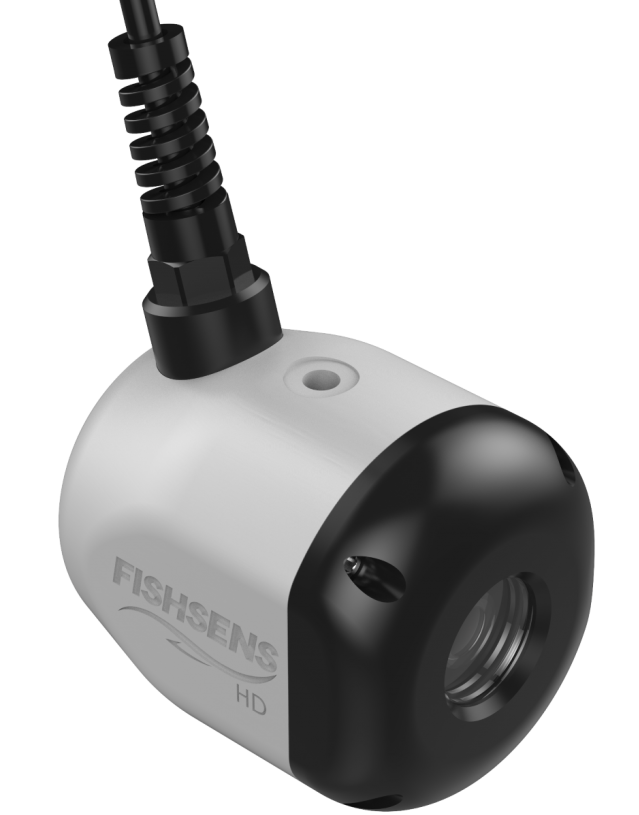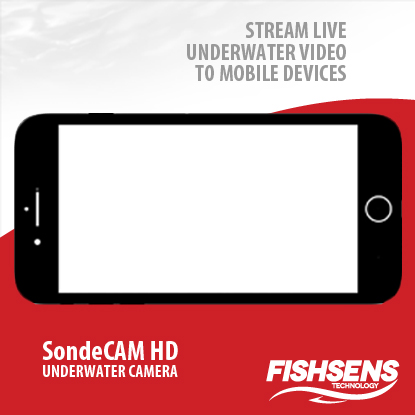Behind-The-Scenes Of The SondeCAM Evolution
 SondeCAM HD Underwater Camera (Credit: FishSens)
SondeCAM HD Underwater Camera (Credit: FishSens)Although the FishSens SondeCAM was developed as a tool to help anglers detect underwater structures (and hopefully the fish lurking nearby), the growth of the SondeCAM from conceived design to sleek, realized product isn’t unlike that of the anglers it aids, transitioning from newbie to pro. And there were plenty of lessons to learn before the SondeCAM could realize its full potential — much less catch sight of its first fish.
Early Drafts of the SondeCAM
The initial SondeCAM design looked much different than the product available today, but one thing that never changed was its name or its origin. The long, tubular housing was built of dark grey PVC, giving it the appearance of a flashlight or, perhaps, a water quality sonde. A top-mounted railing was intended to connect to a control rod or wire, allowing more precise positioning in conjunction with the rear-connecting cable. The design also featured a tapered fin on the bottom of the body to stabilize the camera as it moved through water.
The next incarnation of the SondeCAM underwent some notable changes, but was still the same general size and shape. The body — now sporting the FishSens logo — narrowed and lengthened, while the cable connection moved from the rear to the top, eliminating the need of a railing for control. A screw-off cap was installed at the rear of the body in place of the cable connection, allowing access into the SondeCAM’s electronics. The stabilizing fin began to look more like the fin of an actual fish.

SondeCAM HD Underwater Camera evolution line (Credit: FishSens)
Developing Familiar Shape and Branding
As the SondeCAM evolved once again, it finally began to resemble the product we know today. Gone was the dark, sonde-like housing. Instead, a durable, rust-resistant body made of anodized aluminum took its place and it was half the length of the previous model. This marked one of the most important alterations to the SondeCAM’s design, according to Trevin Fondriest, SondeCAM product manager. While this version kept its flat face, the rear of the device tapered to a rounded end. And a new cable connection jutted out at an angle, allowing the SondeCAM to remain level as it dragged behind a boat.
With these changes came the loss of the stabilizing fin, though maybe not for long. Fondriest said he was hesitant to ditch the fin as a standard feature, but a similar stabilizer “is under development as an option in the current generation.”
The SondeCAM’s next stage looked like it had grown up as the next set of modifications featured minor changes with most being about the size of the device. The aluminum housing lengthened a bit to accommodate a more powerful camera capable of greater resolution and low-light video. A black plastic cap was set at the rear of the body to serve as a bumper in case of collisions. In addition, adjustments to the faceted angles on the body, a more rounded faceplate and some minor adjustments to the cable connection have brought the SondeCAM to where it is today.
Future Development of the SondeCAM
The SondeCAM’s direct connection to popular fishfinders, ruggedized design and sensor integration already set it apart from the competition, Fondriest says. But like any great angler, the SondeCAM isn’t done growing. What new tricks might the SondeCAM pick up with future iterations?
“Integrated LED or infrared illumination, cable management and on-the-move video,” Fondriest said. “We’re also looking into hydro-dipping the housing in an aquatic camouflage pattern for greater concealment underwater.”



0 comments